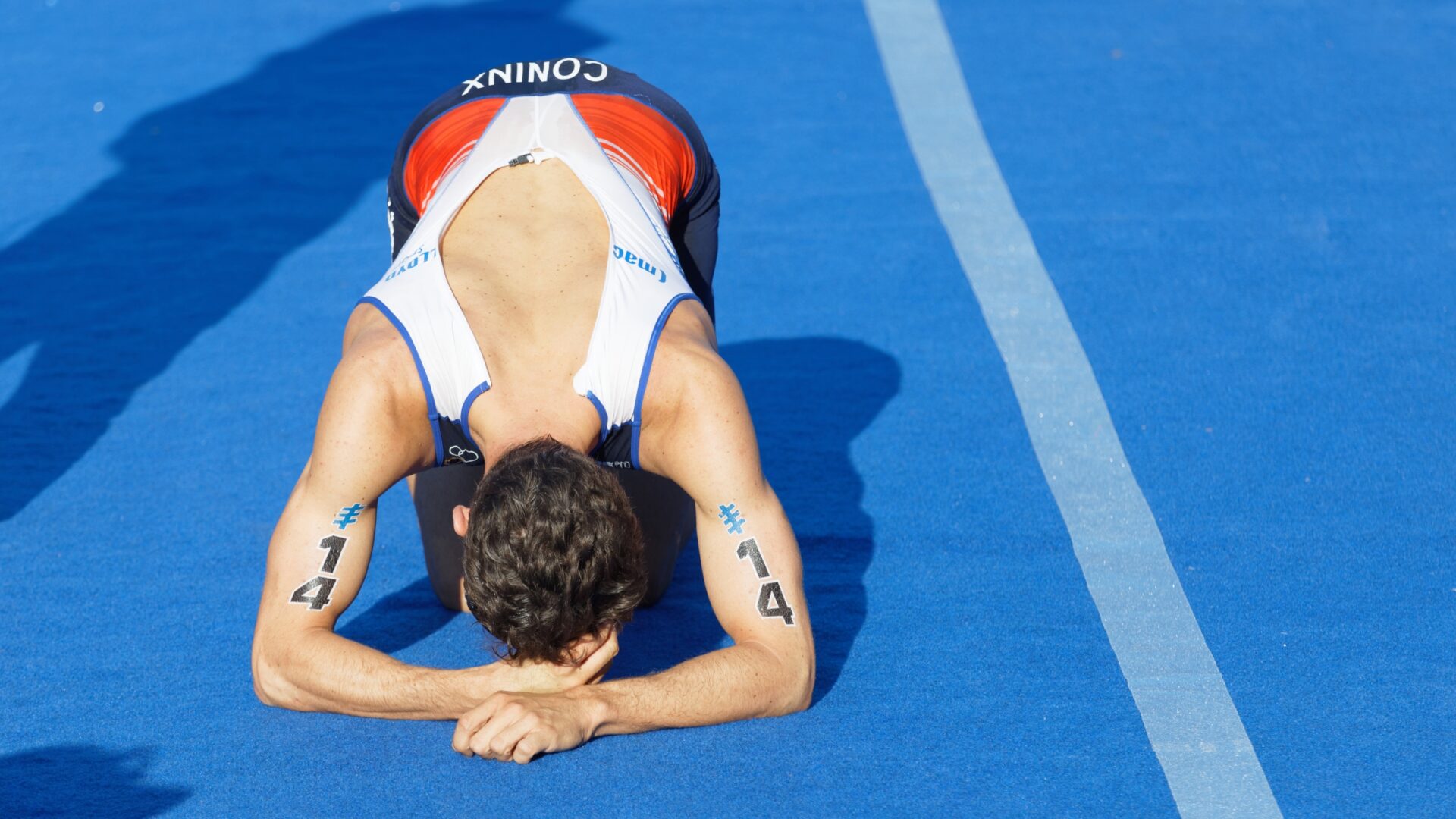Polarized training involves athletes doing the majority of their training at a low intensity, while a much smaller proportion of it is hard, higher-intensity work. This balance (approximately 80% lower/20% higher) helps create the optimal conditions for adaptation—and it’s these adaptations that we want to see to get fitter, faster, and stronger.
Knowing when to time the higher-intensity sessions is key to getting the maximum gains from them—and central to this is understanding your nervous system and how your body handles and responds to stress. In this article, we’ll look at how the autonomic nervous system works, how life stress and training stress affect us, and ways in which you can learn to reduce or remove stress from your life to be the best athlete you can be.
After all, a stressed athlete who forces themselves to push through a tough workout is going to see far fewer gains than the athlete who knows when to rest and return to it another day. In my opinion, this can often be what separates the good athletes from the great. Equally, attempting to do a hard session a day after you’ve gone too hard in what was supposed to be an easy session may also compromise your ability to get full gains out of that hard session. Without proper recovery the high-intensity work simply cannot be as intense as it could be.
Stress is stress
We often hear the phrase “stress is stress,” meaning all stress (regardless of where it is coming from) has similar effects on our bodies, and there is a physiological basis behind that claim.
In 1936, physiologist Hans Selye coined the term, “general adaptation syndrome,” stating that no matter the source of the stress, whether environmental, physical, or psychological, our body, and more specifically, our autonomic nervous system, responds in similar and predictable ways. The initial reaction is alarm, then resistance or response to the stressor, and finally, if the stressor persists for too long or is too great for the body’s adaptation reserves, then we reach exhaustion.
Importantly, as Selye discovered, stress is general, and all types of stress are processed by the same autonomic nervous system. This fact has particularly important ramifications to athletes who may be under other forms of (life) stress and not realize the impact that it has on their training.
The stress response
The autonomic nervous system (ANS) is the part of the nervous system that controls the body’s involuntary or autonomic functions, such as heart rate, digestion, respiration, and blood pressure. The ANS is divided into the sympathetic nervous system (SNS) and the parasympathetic nervous system (PNS). The sympathetic nervous system is responsible for the body’s fight-or-flight response, while the parasympathetic nervous system is responsible for the body’s rest-and-digest or feed-and-breed response.
The stress response is a complex series of reactions that is triggered by an environmental, physical, or psychological stressor. It is the body’s way of protecting itself from the harmful effects of stress and is mediated by the sympathetic nervous system and the hypothalamic-pituitary-adrenal (HPA) axis.
The stress response begins with the recognition of a stressor by the brain. The brain then triggers the release of hormones, such as adrenaline and cortisol, which prepare a series of physiological changes the body in response to a perceived threat. This is known as the fight-or-flight response, characterized by an increase in heart rate, blood pressure, and respiration, and a decrease in digestive activity.
If the stressor is not removed, the stress response will continue, and the body will eventually reach a state of exhaustion. When this happens, the stress response is no longer effective and the body is vulnerable to the harmful effects of stress, such as the development of chronic diseases.
It is important to note that the stress response is a natural and necessary part of the body’s defense mechanism. Responding to stress helps the body to protect itself from harm.
Allostasis and adaptation
The body is always trying to stay in balance, or homeostasis. Stressors threaten this balance and the body, when it is healthy, tries to respond and adapt to these stressors in order to maintain homeostasis. Peter Sterling and Joseph Eyer (1988) called this process allostasis.
Famed neuroendocrinologist Bruce McEwen expanded on this idea, explaining that too much allostatic load can lead to maladaptation and disease: “Hormones associated with stress and allostatic load protect the body in the short run and promote adaptation by the process known as allostasis, but in the long run, allostatic load causes changes in the body that can lead to disease. The brain is the key organ of stress, allostasis, and allostatic load, because it determines what is threatening and therefore stressful, and determines the physiological and behavioral responses.”
In other words, adaptation is promoted by a healthy level of allostatic load. For you, the athlete, the key takeaway should be that all stressors contribute to this allostatic load and that once a certain level of allostatic load is exceeded, the body will no longer be able to adapt to and respond to the stress of training. More plainly, periods of rest and relaxation and the absence of significant external life stress is absolutely essential to improving.
Recovering from stress
All of the positive adaptations that we seek come not during the initial “alarm” phase when you are in the middle of a hard workout, but instead come when the workout ends, the stressor is removed, and the body has the time and energy to respond to the stress. The body needs this recovery to repair the muscular damage done beyond the initial level of muscle strength so that, if the stressor is encountered again, you will be better prepared to increase your energy reserves and withstand the stress for longer should it happen again.
It follows that, if the athlete goes straight from one stressor (the workout) to another stressor (a stressful workday), the “alarm” is never removed and so the ability of the athlete to respond to that initial stressor is severely compromised. In terms of performance in sport, this can lead to sub-optimal performance, overtraining, and injury.
In looking at autonomic stress in the athletic context, a growing number of researchers suggest that this combining of autonomic stressors—running from one stress to the next—is a key factor in athletic non-response and that overtraining syndrome is less a disorder related to poorly managed training loads and more a disorder related to poorly managed stress. From a 2004 paper in the Journal of Endocrinological Investigation:
“Overtraining syndrome reflects the exhaustion stage of Selye’s general adaptation syndrome, which is characterized by insufficient glucocorticoid response to increasing demands due to persistent physical and/or psychological stressors.”
In other words, when the overall stress pool of physical and psychological stress is too great, or continued for too long, the ability of the body’s glucocorticoid stress response system is impaired. Long before this reaches a clinical level (e.g., in the case of chronic fatigue syndrome), the individual will typically exhibit diminished response to any given stressor, including the stressor of physical training. A classic example of this is riders doing a stage race or big training camp see a depressed heart rate later in the event because their sympathetic system has been blunted.
Training stress
Training stress is any stress that is added to the athlete’s life that is above and beyond their normal routine. In other words, training that adds fatigue (in addition to any fatigue that may be coming from other areas of the athlete’s life). In training terms, when we schedule a day that is beyond the athlete’s normal “chronic” load, we call this a loading day. When we schedule a load that is below the athlete’s chronic load, we call it a recovery day.
Importantly, normal routines can vary greatly from athlete to athlete and can even change on a daily basis, such as a busier day at work or sudden family stress. So, in addition to the athlete’s chronic level of training stress, we must also consider how today looks relative to their level of “chronic life stress.”
Providing there is enough adaptive energy within the system to respond to the stress, the body will adapt to the training stress and become more fit, meaning it will be able to handle a higher training stress in the future. When the body is low in adaptive energy, such as when it is dealing with other life stressors, the ability of the body to respond to training is compromised.
RELATED: The Relationship Between Performance Level and Training Stress
Managing stress
So, what’s the solution? The most important solution is to identify the general autonomic stress that you may be under and to take steps to manage it. The first step is to be aware of the signs and symptoms of stress. The second step is to be proactive in reducing the amount of stress in your life. The third step is to not “stack your stressors”—that is, when life stress is high, dial down the training stress and vice versa.
Identify signs and symptoms of stress
- Feeling anxious, irritable, or moody
- Inability to focus or concentrate
- Feeling overwhelmed or like you are not in control
- Not sleeping well
- Feeling tired all the time
- Becoming sick more often
- Feeling like you need to drink more caffeine or alcohol to get through the day
- Experiencing muscle tension or headaches
Reduce the amount of stress in your life
- Take breaks during the day to relax and rejuvenate
- Practice relaxation techniques such as yoga, mediation, or deep breathing
- Get regular exercise
- Eat a healthy diet
- Get enough sleep
- Learn how to delegate tasks and how to say “no”
RELATED: How to Manage Competition Stress
Don’t combine your stressors
- Monitor your daily stress on a regular basis by running through this signs and symptoms checklist and considering your general stress state before determining how much training stress you want to add.
- If you are coming from a very stressful day of work, where your cortisol is running high and your body is in a pronounced fight-or-flight state, this is not a good time to prolong that ANS alarm phase by immediately moving to a second stressor of a high-intensity workout.
- Heart rate variability (HRV) can also be a really helpful tool to determine your overall level of autonomic stress before determining how much training stress you would like to add on that day.
How to use HRV data to determine overall ANS stress
One of the best ways to gauge the overall stress on your ANS is to use heart rate variability. HRV is a measure of the time between heartbeats. The more variability in that time, the lower the current stress on the autonomic nervous system. The less variability between heartbeats, the higher the current stress on the ANS. By using HRV in this way, we get a “window” into the current level of autonomic stress to help us to determine if we want to add training stress on top of that.
When HRV is high relative to the athlete’s normal levels, the body’s adaptation reserves are high and in a great spot to absorb training with a higher-than-normal training load (i.e., a loading day). These days will generally have a higher training stress than the athlete’s typical training stress and will often include some higher intensity training.
On the other hand, when HRV is low relative to the athlete’s normal levels, the body is dealing with other stressors and the adaptation reserves are low. In these cases, response to training is compromised and a recovery day below the athlete’s typical training load is warranted. These days should have lower overall training stress than the athlete’s typical training stress and should include some lower-intensity training designed to boost the recovery of the ANS, such as easy training below the first threshold.
Short-term action for long-term development
Stress is stress and never forget that your autonomic nervous system is tasked with the heavy load of responding to all of the stressors in your life, regardless of where they might be coming from (training or otherwise). The ability of your ANS to continue to respond to stressors over the long term is contingent on you being kind to it, looking after it and giving it sufficient time to downregulate and build up energy for the next onslaught.
This is where the polarized training approach can bring about the greatest benefits. By making sure that no more than 20% of your training each week is higher intensity, you give your body the best chance of managing stress and adapting to training. It is not overstating things to say that much of your long-term development as an athlete will come down to your ability to recognize and manage autonomic stress.
References
- Selye, H. (1936). A syndrome produced by diverse nocuous agents. Nature, 138(3505), 32.
- Sterling, P., & Eyer, J. (1988). Allostasis: A new paradigm to explain arousal pathology. In S. Fisher & J. Reason (Eds.), Handbook of life stress, cognition and health (pp. 629–649). John Wiley & Sons.
- McEwen, B. S. (1998). Protective and damaging effects of stress mediators. The New England journal of medicine, 338(3), 171-179.
- Angeli, A., Minetto, M., Dovio, A. (2004) The overtraining syndrome in athletes: A stress-related disorder. J Endocrinol Invest 27, 603–612.
- McEwen, B. S. (2007). Physiology and neurobiology of stress and adaptation: central role of the brain. Physiological reviews, 87(3), 873-904.
- National Institute of Mental Health. (2018). Stress: The different kinds of stress. https://www.nimh.nih.gov/health/publications/stress/index.shtml





